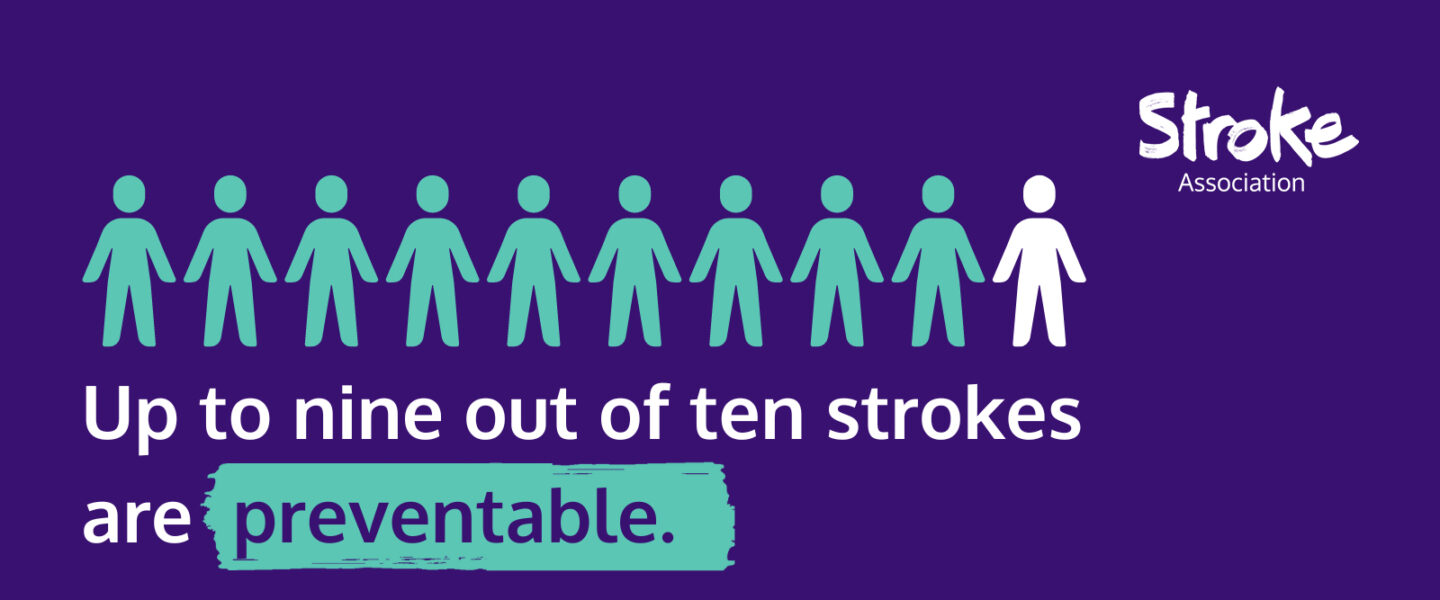17 August 2023

Help reduce your risk of stroke – by lowering your blood pressure.
High blood pressure is the biggest risk factor for stroke and plays a part in about half of all strokes. Your heart pumps blood all around your body through a network of blood vessels and blood pressure is a measure of how strongly the blood presses against the walls of your blood vessels. Your blood pressure goes up and down over the course of a day, for example, it changes depending on if you’re active, resting, calm or stressed. A diagnosis of high blood pressure means that your blood pressure stays high over a long period. The medical term for this is hypertension.
High blood pressure can lead to stroke in different ways. It can lead to blood clots in the brain and can damage the tiny blood vessels deep inside the brain. It can also make a stroke due to bleeding in the brain more likely.
Although high blood pressure is a serious condition, there are things you can do to lower your blood pressure, that can help to reduce your risk of stroke. If you can lower your blood pressure by just 10 mmHg, you cut your risk of stroke by over 25%.
One thing you can do is to reduce the amount of salt in your diet which can help to lower your blood pressure, therefore reducing your risk of stroke. If you find it difficult to cut salt out completely, there is an alternative to regular salt. LoSalt is the UK’s leading reduced sodium salt*. It delivers 66% less sodium than regular table, sea and rock salts without any taste compromise.
When you’re diagnosed with high blood pressure, you should also be given advice about any medication you can use or lifestyle changes you need to make. Ask your GP or pharmacist about local support services. Free help is available with quitting smoking, and you may also find support or apps you can use for help with eating healthily, losing weight, getting more active, cutting down on drinking, and reducing stress and anxiety. Also, you can visit the Stroke Association’s free online self-management tool to hear how others manage their risk of a stroke: www.mystrokeguide.com
Here are some more tips on how to lower your blood pressure:
- Reduce your salt intake.
- Get help with quitting smoking.
- Eat plenty of fruit and vegetables.
- Lose weight if you need to.
- Reduce your alcohol intake and avoid binge drinking.
- Be more active.
- Reduce your stress levels and take time to relax.
- Try to get at least six hours sleep a night.
For more information read ‘How to reduce your risk of a stroke’
Measurements for normal blood pressure**:
- High blood pressure is considered to be 140/90mmHg or higher (or 150/90mmHg or higher if you’re over the age of 80)
- Ideal blood pressure is usually considered to be between 90/60mmHg and 120/80mmHg
- Blood pressure readings between 120/80mmHg and 140/90mmHg could mean you’re at risk of developing high blood pressure if you do not take steps to keep your blood pressure under control.
- Low blood pressure is considered to be 90/60mmHg or lower
*People receiving medication for diabetes, heart or kidney disorders should consult their doctor before using a reduced sodium salt.
**Source: https://www.nhs.uk/conditions/high-blood-pressure-hypertension
